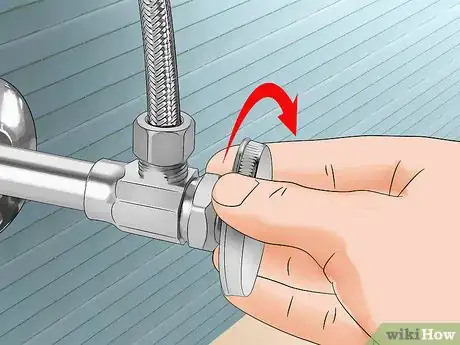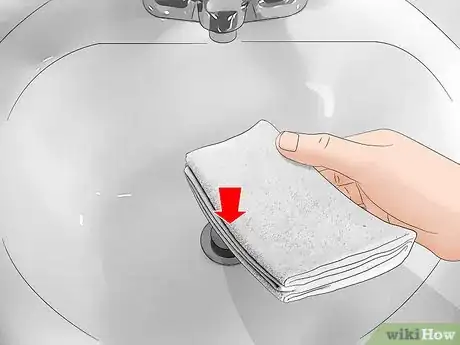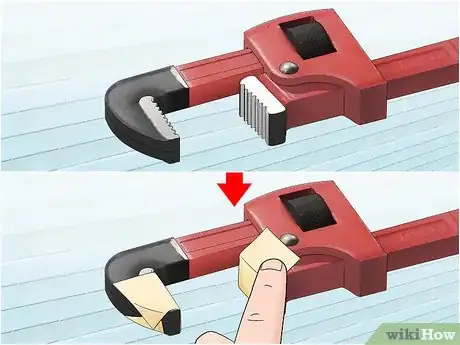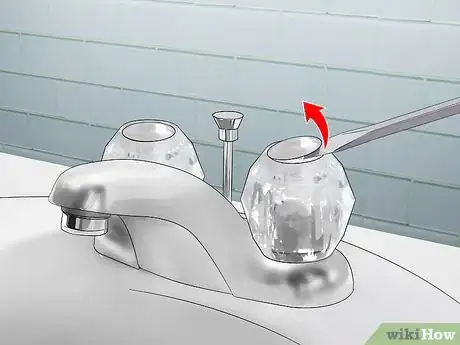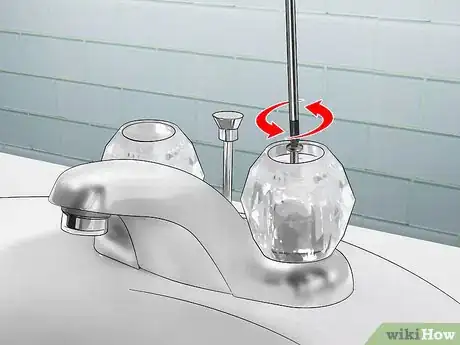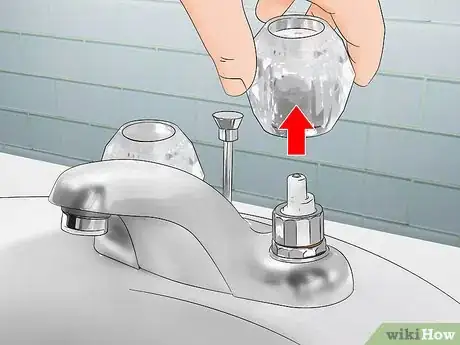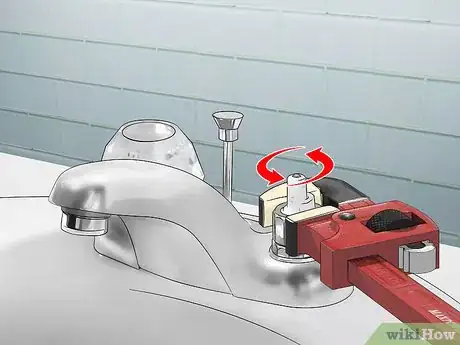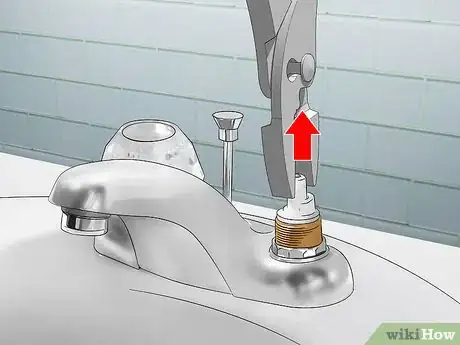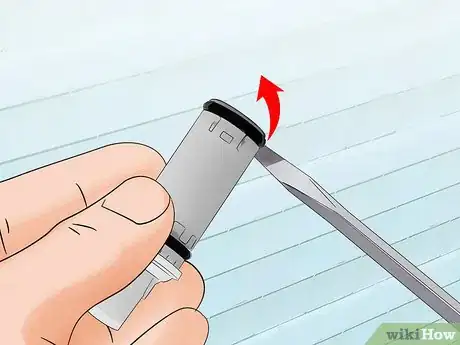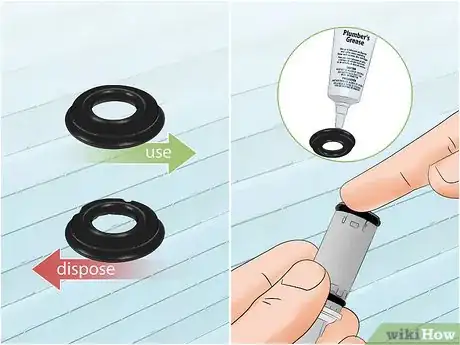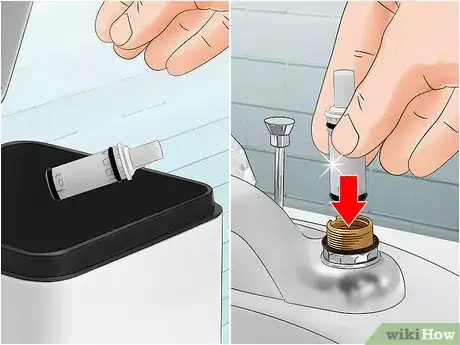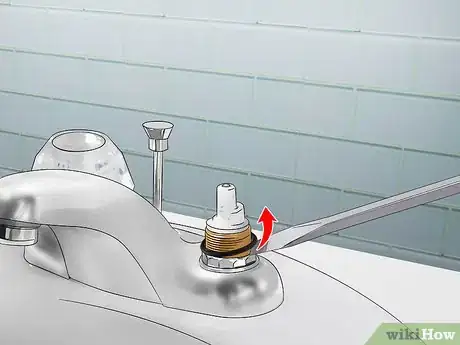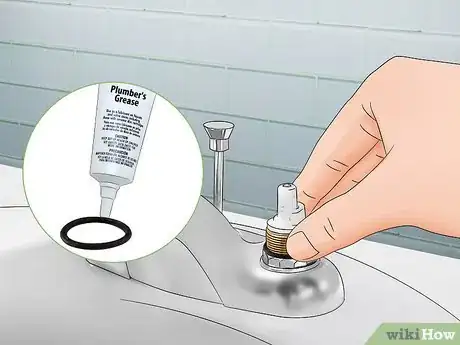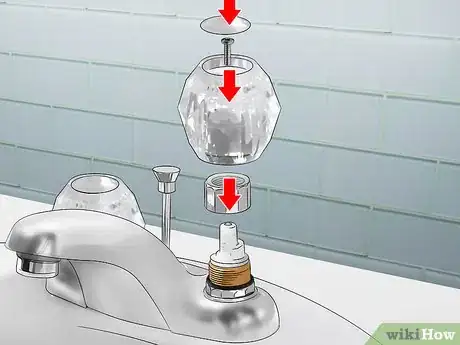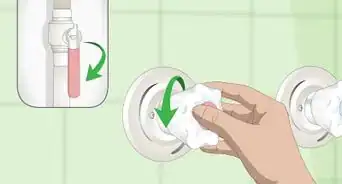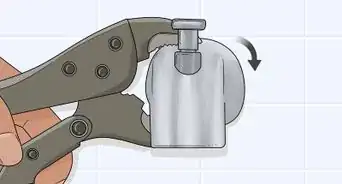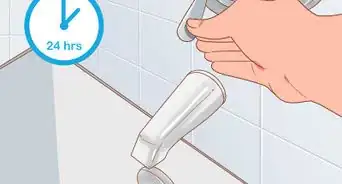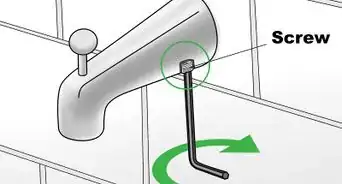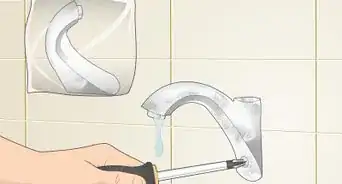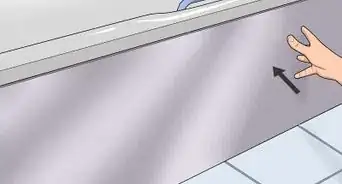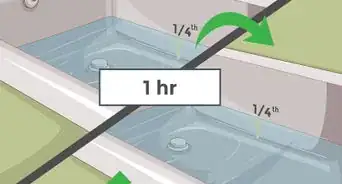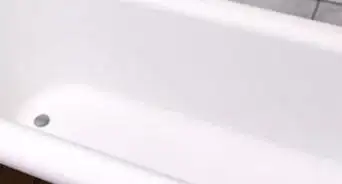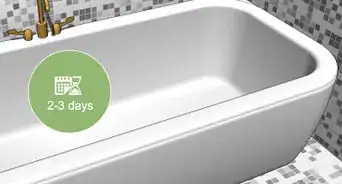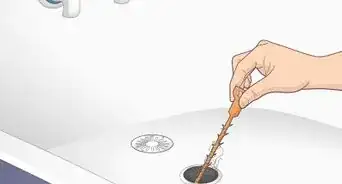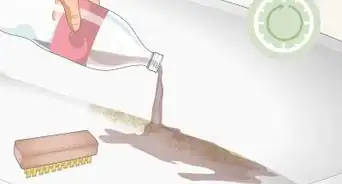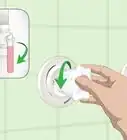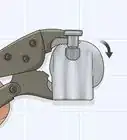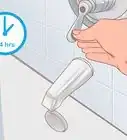This article was co-authored by James Schuelke. James Schuelke, along with his twin brother David, is the co-owner of the Twin Home Experts, a licensed plumbing, leak detection, and mold inspection company based in Los Angeles, California. James has over 32 years of home service and business plumbing experience and has expanded the Twin Home Experts to Phoenix, Arizona and the Pacific Northwest.
There are 12 references cited in this article, which can be found at the bottom of the page.
This article has been viewed 52,961 times.
Sooner or later, most homeowners will run into a problem with a leaky bathroom faucet. Usually, faucet leaks are caused by worn washers or seats in the faucet assembly. Fortunately, these parts are easily replaced. You can purchase all of the parts you’ll need at a local hardware or home-improvement store. Fixing a bathroom faucet can be done in less than an hour with just a few replacement parts. Keep in mind, though, that if you’re not quite comfortable undertaking this plumbing task on your own you can always call a local plumber instead.
Steps
Getting the Sink Ready
-
1Switch off the water valve under the sink. Before you start any sink repair, it’s important that the water supply be shut off. Follow the pipes from the back of the sink down and find the water valves. They’re often located in a cabinet beneath the sink. Turn the 1 or 2 valves that you find clockwise to turn off the water.[1] [2]
- If you don’t shut off the water, you could quickly find yourself in the middle of a flooded bathroom.
-
2Cover the sink drain with a rag to prevent parts from getting lost. You’ll be working with a number of small screws, O-rings, and other parts that could easily slip down the sink’s drain. To prevent crucial parts from being lost, place an old rag over the drain.[3]
- For extra protection, pull on the lever behind your sink to shut the drainage hole at the bottom of the basin.
- Once you’ve fixed the faucet, remember to remove the rag.
Advertisement -
3Wrap the jaws of your wrench in duct tape to protect the metal faucet. You’ll be using a wrench to remove parts of the faucet. The sharp, steel inner jaws of the wrench could easily scratch the metal of your faucet. To protect the faucet, tear off a 2 in (5.1 cm) section of duct tape and wrap it around 1 side of the wrench’s jaws.[4]
- Repeat the process to cover the other side of the wrench’s jaws as well.
Dismantling the Faucet
-
1Pry off the caps from the sink handle with a screwdriver. Work the edge of a flat head screwdriver beneath the 2 caps on top of the sink handles. Use gentle leverage to pry the caps off, and lift them off with your fingers once they’re loose enough. Work carefully so you don’t scratch or accidentally snap either of the caps.[5]
- Ball-type faucets will only have 1 faucet handle with a single cap.
-
2Remove the screws that hold the faucet handles on to the faucet base. You’ll see a screw on the top of both faucet handles, right beneath the cap you just removed. In most cases, these are Philips head screws. Place the tip of a screwdriver into the slots in the screw and turn counterclockwise to loosen the screws.[6]
- Set the faucet caps and the screws to the side in a safe place. For example, set them in a shallow bowl so they don’t roll off your bathroom counter.
-
3Lift off the faucet handle to access the cartridges. With the screw removed, there will be nothing holding the faucet handle(s) in place. Pick the handle up and lift it up away from the faucet base.[7]
- Set the handle in a safe place where it won’t roll away—for example, in the same dish that the screws are in.
-
4Unscrew the nut holding the cartridges in place. With the faucet handle out of the way, you’ll be able to see the tip of the cartridge sticking up from above the 1⁄2 inch (1.3 cm) nut that’s holding it in place. Fit the jaws of your duct-tape-covered wrench around the nut and turn it counterclockwise to loosen it. Once it’s all the way loose, finish unscrewing the nut with your fingers and lift it off.[8]
- If you’re fixing a cartridge-type faucet, there may be a plastic retaining clip holding the cartridges in place. Remove this with a pair of needle-nose pliers.
-
5Grasp the cartridge stem with needle-nose pliers and pull straight up. The tip of the cartridge will be about 1⁄2 inch (1.3 cm) high and 1⁄4 inch (0.64 cm) across. Use the fine point of a pair of needle-nose pliers to hold onto the tip of the cartridge and lift it straight up and out of the faucet base.[9]
- If you’re dismantling a ball-type faucet, you’ll also need to remove the seals and springs from inside the faucet with a needle-nose pliers.
Replacing Worn-Out Parts
-
1Pry a damaged washer out of the sink handle with a screwdriver. If 1 of the faucet handles that you’ve removed has been leaking, turn it over and find the flat plastic washer in its base. Use the edge of a flat head screwdriver to pry the washer out of its place in the handle.[10]
- A damaged washer is a common cause of leakage in older sinks or sinks that get used many times a day. When the washer is damaged, you’ll notice water leaking out from the base of the faucet handle.
-
2Replace the seat washer with a new washer. Washers cannot be fixed or repaired, so you can dispose of the old washer. Coat the new washer with plumber's grease, and then install it in the base of the handle. Washers fit by pressure, so use your fingers and the edge of a screwdriver to set the washer firmly in place.[11]
- Purchase new washers at a nearby hardware store. When you go shopping for washers, take the old washer with you so you can match it to the new washer.
- You can also find plumber’s grease at any hardware store.
-
3Throw away an old, leaking cartridge and replace it with a new one. Cartridges are used in more modern faucets that have been manufactured within the last 15–20 years. If the cartridge in your sink leaks—or if you suspect it of leaking—throw it away.[12] Replace the old cartridge by sliding a new one into the faucet base in its place.
- Some larger hardware stores may stock a variety of bathroom-faucet cartridges. However, it’s more likely that you’ll need to order a new cartridge directly from the manufacturer’s website.
- If you’re not sure whether or not the cartridge is responsible for the leak, it’s better to err on the safe side and replace it anyway.
-
4Remove the old O-ring if your faucet is leaking around the base. If the base of your bathroom faucet leaks, a worn-out O-ring may be the culprit. To replace an old O-ring, unscrew the stem from the packing nut and remove the O-ring. O-rings are found in the base of the packing nut, which will be visible once you’ve removed the nut holding the cartridges in place. Unscrew the packing nut with your wrench to access the O-ring.[13]
- If you’re struggling to pull the O-ring out of its housing, you may need to use a utility knife to cut through 1 side of the O-ring.
- Do not throw away the old O-ring. Instead, take it with you to a hardware store so you can precisely match the new O-ring to the size of the old one.
-
5Coat the new O-ring with grease and install it in the faucet base. Dab a small dollop of grease on both sides of the O-ring and use your fingers to rub it across the plastic. Then set the O-ring back in the faucet base and place the packing nut on top of it. Use your wrench to tighten the packing nut as tight as it will go. If there’s any wiggle room, water may be able to leak past the O-ring.[14]
- Waterproof plumber’s grease will keep the O-ring’s seal tight and prevent any minerals in the water from damaging the plastic ring.
-
6Reassemble the faucet and test it for any lingering leaks. Place the cartridge back in its place and use a wrench to tighten the nut in place around it. Set the sink handles in place over the cartridges, and tighten the screw(s) back in the top of the handles. Finally, push the caps back in place on the top of the handles, and turn the water valves back on by rotating them counterclockwise.[15]
- To see if the leak is fixed, run the faucet. At this point, the leak should have stopped. If it still leaks, it may be time for you to call a plumber.
Expert Q&A
-
QuestionHow do I increase the water pressure on a bathroom sink?
 James SchuelkeJames Schuelke, along with his twin brother David, is the co-owner of the Twin Home Experts, a licensed plumbing, leak detection, and mold inspection company based in Los Angeles, California. James has over 32 years of home service and business plumbing experience and has expanded the Twin Home Experts to Phoenix, Arizona and the Pacific Northwest.
James SchuelkeJames Schuelke, along with his twin brother David, is the co-owner of the Twin Home Experts, a licensed plumbing, leak detection, and mold inspection company based in Los Angeles, California. James has over 32 years of home service and business plumbing experience and has expanded the Twin Home Experts to Phoenix, Arizona and the Pacific Northwest.
Professional Plumber Remove and clean out the aerator on the end of the faucet since debris may have built up over time.
Remove and clean out the aerator on the end of the faucet since debris may have built up over time.
Things You'll Need
- Old rag
- Wrench
- Duct tape
- Flat head screwdriver
- Needle-nose pliers
- Plumber's grease
- Philips head screwdriver
- New washer
- New O-ring
- New cartridge
- Utility knife (optional)
- Distilled white vinegar (optional)
- Soft scouring pad (optional)
References
- ↑ James Schuelke. Professional Plumber. Expert Interview. 1 October 2019.
- ↑ https://www.thisoldhouse.com/ideas/fixing-leaky-faucet
- ↑ https://youtu.be/DX-OLwqFdHI?t=30
- ↑ https://www.thisoldhouse.com/ideas/fixing-leaky-faucet
- ↑ https://youtu.be/T5DImWddq5w?t=15
- ↑ https://youtu.be/T5DImWddq5w?t=18
- ↑ https://youtu.be/T5DImWddq5w?t=25
- ↑ https://youtu.be/T5DImWddq5w?t=31
- ↑ https://youtu.be/T5DImWddq5w?t=39
- ↑ https://youtu.be/T5DImWddq5w?t=44
- ↑ https://www.thisoldhouse.com/ideas/fixing-leaky-faucet
- ↑ https://youtu.be/T5DImWddq5w?t=55
- ↑ https://www.familyhandyman.com/plumbing/faucet-repair/faucet-repair-fix-a-leaking-faucet/view-all/
- ↑ https://www.thisoldhouse.com/ideas/fixing-leaky-faucet
- ↑ https://youtu.be/T5DImWddq5w?t=84
- ↑ https://www.thisoldhouse.com/ideas/fixing-leaky-faucet
- ↑ https://www.thisoldhouse.com/ideas/fixing-leaky-faucet
